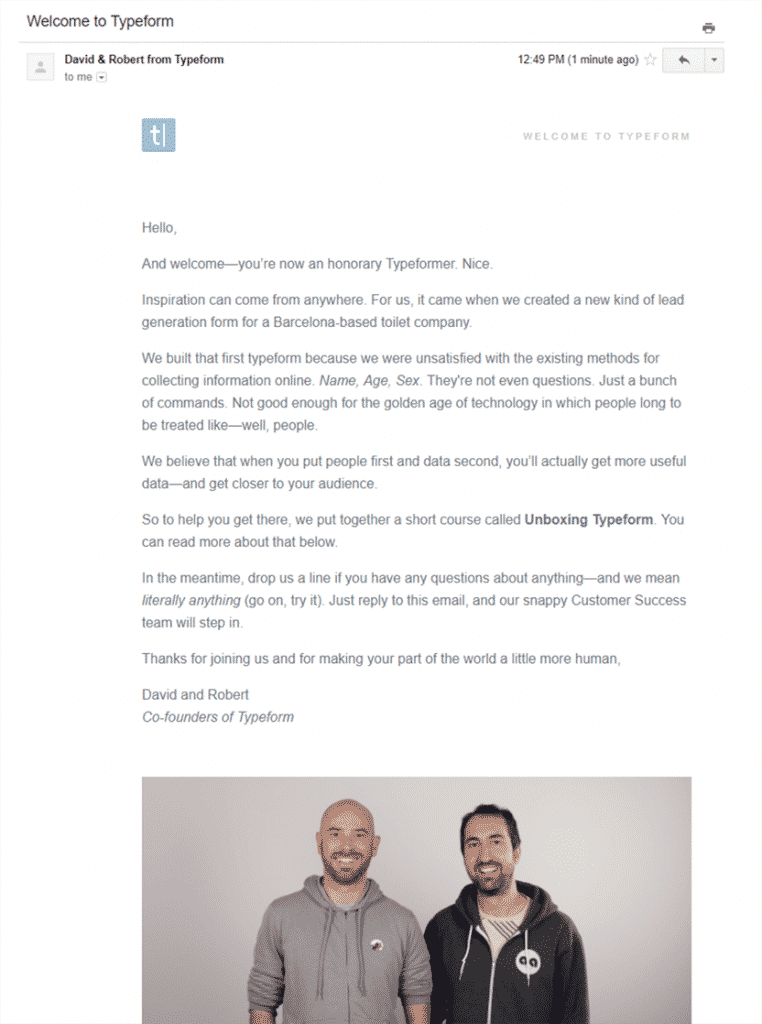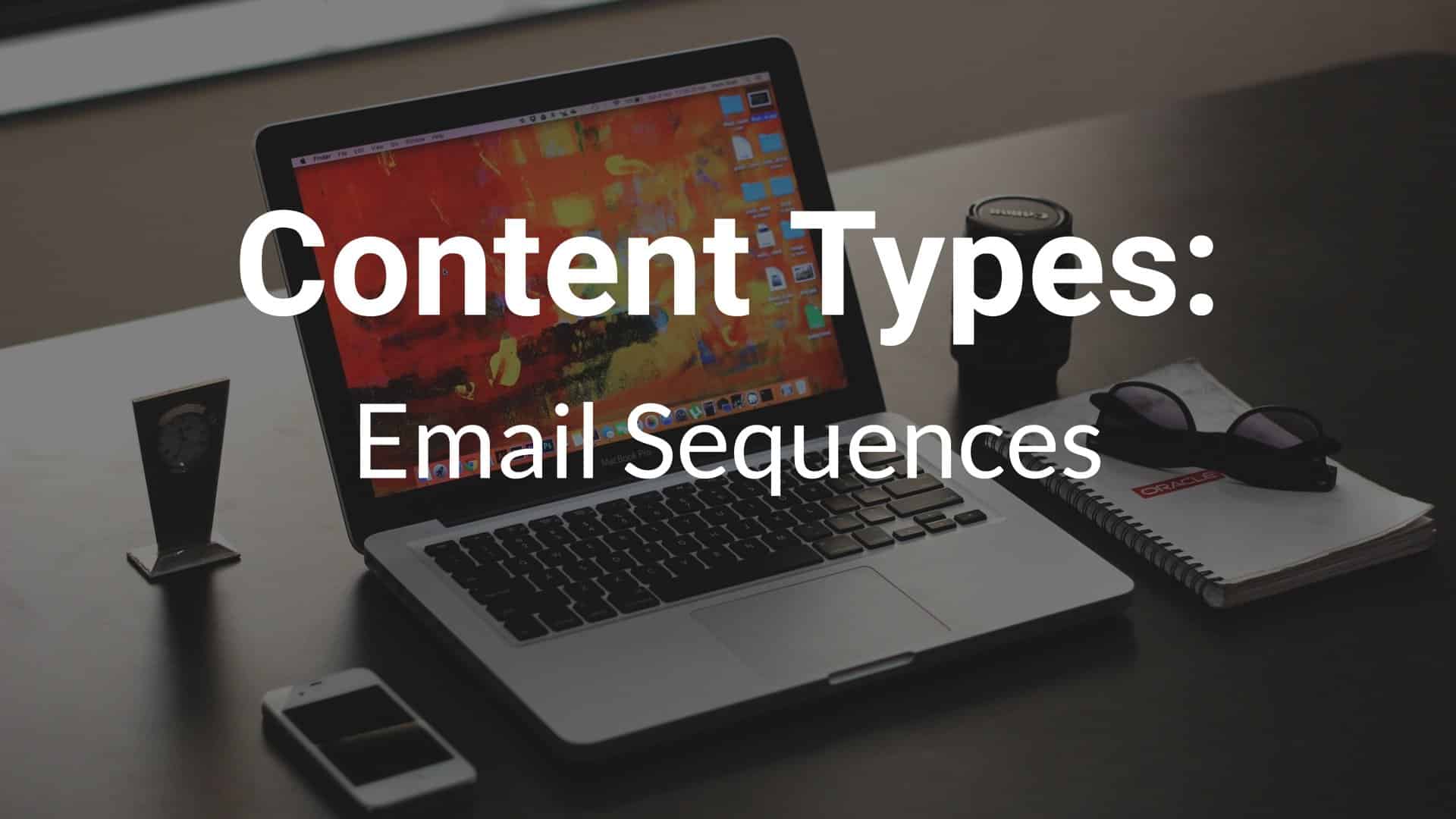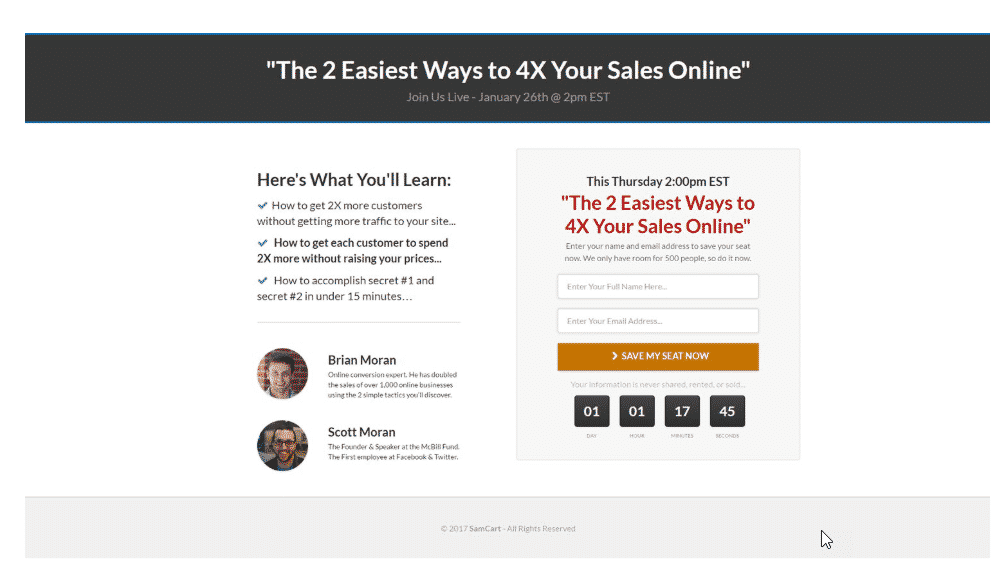Welcome to the sixth post in the Content Types series from Horizon Peak Consulting. As we roll out the 8 posts we have planned for this series, our goal is to help you see new opportunities for engaging your target audience and making more sales with your marketing content.
Two of the most important aspects of B2B marketing are lead acquisition and nurturing.
I’ve talked before about the importance of email in your content marketing strategy. When someone gives you their email address, you have a golden opportunity to start building a relationship with them.
One way to do that is to publish a regular email newsletter.
But you can do more with email than just deliver educational content to your audience’s Inbox.
You can use email to nudge your subscriber to take action.
Enter: Email sequences.
You might know them as autoresponders or drip campaigns, but the idea is the same.
An email sequence is a series of pre-written emails sent to a targeted list of subscribers at predetermined times and intervals.
Each email in the sequence has a purpose — to steer the recipient toward the ultimate action that you want your subscriber to take.
Email sequences are an excellent opportunity to connect with and nurture your prospect. You can educate and persuade them to accept your call to action. That’s why they’re one of the best vehicles for content marketing in the B2B space.
Let’s take a closer look.
What Makes a Good Email Sequence?
Think about all of your marketing initiatives: a webinar, a free trial, an e-book. Can you convince your prospects to take action with one ad, one landing page, one email?
Likely not.
But how do you reinforce and remind your audience about your offer without risking message fatigue?
The beauty of an email sequence is that the email subscriber has already given you permission to communicate with them (they did that when they gave you their email address). You don’t have to keep capturing their attention — which means you don’t have to hammer them over the head. You can take your time to connect with them and ultimately motivate them to act.
An email sequence is not a broadcast message or a shot in the dark. When someone is funneled into your email sequence, it’s because of some action they’ve taken when interacting with you.
In fact, your subscriber’s own behavior can determine how and when the email sequence is triggered. (How’s that for meeting your prospect where they are?)
Signing up for a free trial. Downloading a white paper. Subscribing to a newsletter. All of those actions tell you something about your prospect and their interest in your business. You can use that information to nurture them along your funnel, and then nudge them to take an action that’s appropriate for their level of awareness.
The number of emails in the sequence can vary, but each one should have a single purpose that serves the larger goal of getting the recipient to take action.
Common Types of Email Sequences
There are as many types of email sequences as there are marketing goals, and each type of sequence could have its own post. But I’d like to talk about some of the most common (and effective) email sequences that my team and I help create for Horizon Peak clients.
Welcome Sequence
When someone gives you their email address, it’s an invitation to connect.
A welcome sequence is a great way to deepen that burgeoning relationship with your prospect — without being creepy or pushy.
You can use a welcome sequence to point them to your most popular blog posts, to invite them to connect on social media, or to ask them about their interests so that you can serve them better. The idea is not to sell, but to open the door for a deeper connection.
Typeform does a good job of this with their welcome sequence. The first email a subscriber receives when they sign up for a free Typeform account includes information about a short course on how to get the most out of the tool — a course which happens to be delivered in four subsequent emails.

Event Sequence
Offering real-time opportunities for people to learn about your product or service is a key component of inbound marketing. The trick is getting people to show up.
Hosting a webinar? You’ll need more than a single email to get folks signed up. According to webinar platform provider GoToWebinar, email promotion accounts for 73% of webinar registrations. And attendees like to procrastinate: 69% of registrations occur in the week leading up to the live event (with 33% signing up the same day!). So a good event nurturing campaign can increase the odds of people signing up, and showing up.
SamCart used a whopping 12 emails (including the one below) to promote their webinar on increasing online sales.
Source: Email Drips
Onboarding Sequence
Have you ever signed up for a free trial of a product … and never used it?
Chances are, you have. And that can point to a failure in the business’s onboarding process.
An onboarding sequence is a critical component of the sales funnel, especially in the as-a-service technology space.
Most SaaS (software as a service) companies offer a free trial to new users as a way to get prospects in the door. A good onboarding sequence keeps new users engaged with the product and helps them get enough value that they convert to a paid subscription at the end of the trial period.
An onboarding sequence usually guides the user in completing key tasks inside the software so that they see value (the famous “Aha” moments). And often the effectiveness of an onboarding sequence is the difference between user retention and user churn.
There’s no set number of emails for this sequence — depending on the product, you should write as many or as few as it takes to help your users get the best possible experience from your product.
ConvertKit uses 14 emails in their onboarding sequence, and covers basic tasks like setting up an account properly to more advanced topics like marketing strategies for building a list.
Source: Email Drips
Email Sequences Are Relationship Amplifiers
An email sequence really can be a marketer’s best friend. They’re automated, so you don’t need to react or guess what you should do next for your prospect. They’re also very easy to measure and test, so you can see what your subscribers respond to (and what they don’t), and adjust accordingly.
Best of all, email sequences allow you to build a relationship with your subscribers — one where you can give, but also ask for something specific in return so that communication turns into a two-way conversation.
As long as your email sequence offers something valuable that serves the subscriber’s goals in some real way, they’ll be happy to take the action you’re steering them toward at the end of the sequence.
That’s a win-win.


